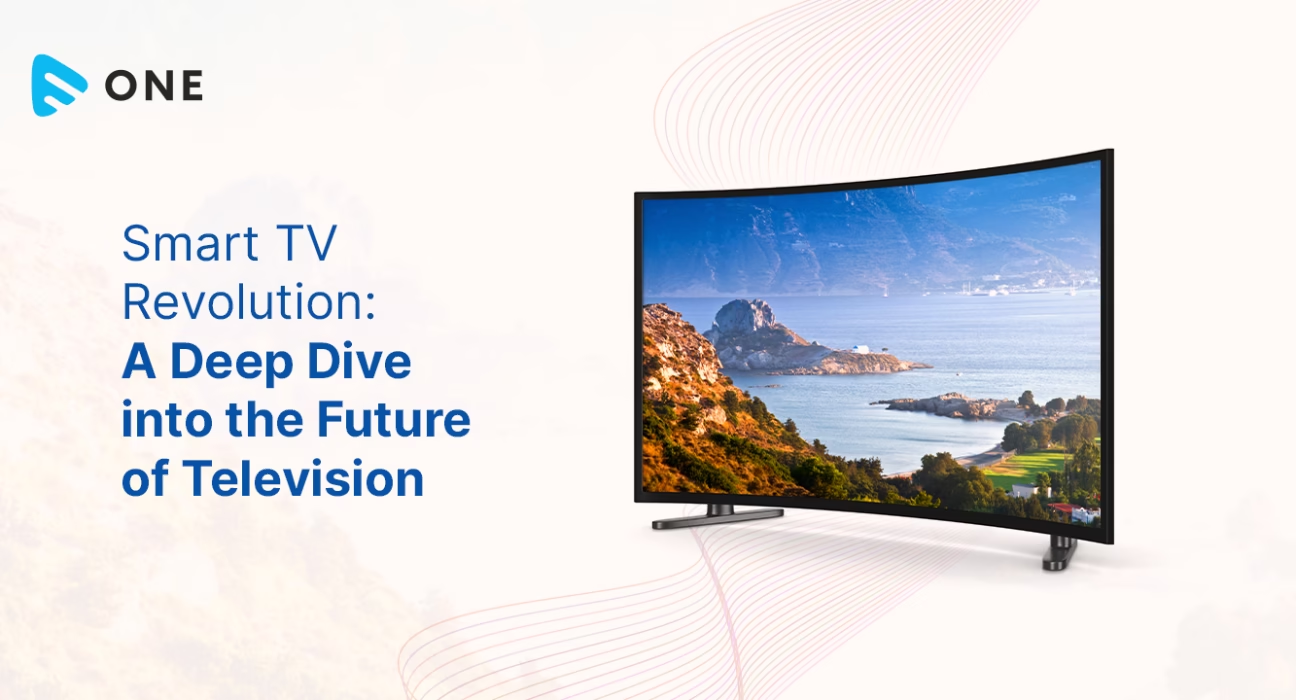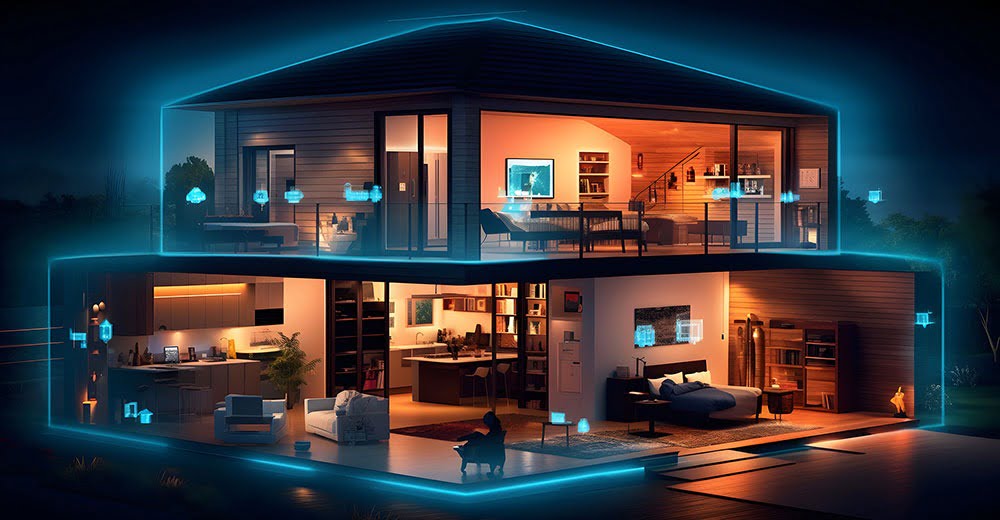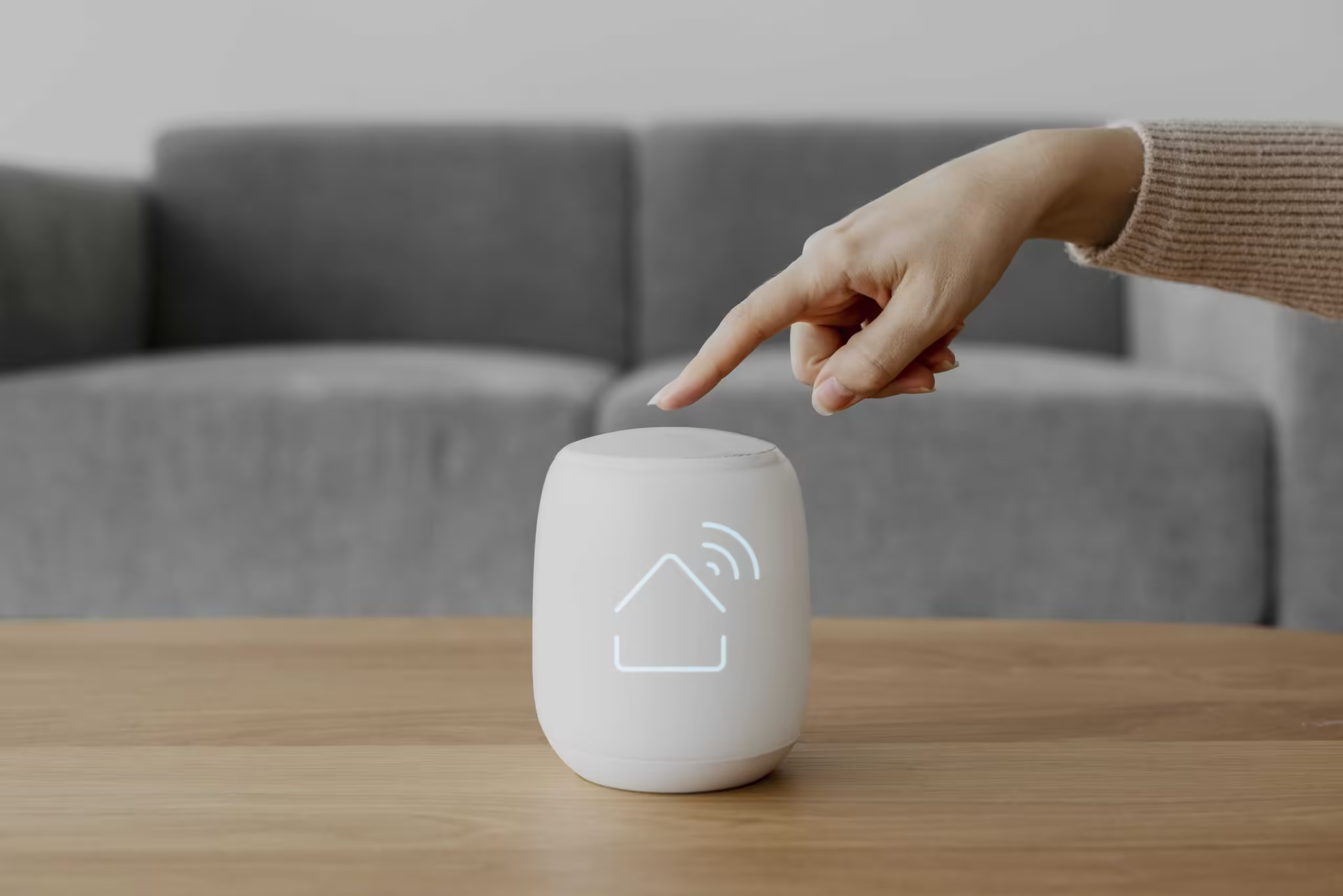Unbeatable AI-Powered Home Entertainment: Exploring Smart TV Innovations
Estimated reading time: 9 minutes
Key Takeaways
- Modern smart TVs leverage Artificial Intelligence (AI) to deliver *unbeatable AI-powered home entertainment*, transforming viewing experiences.
- AI enhances picture quality through adaptive brightness, real-time optimization, and advanced upscaling techniques that convert lower-resolution content to near-4K or 8K sharpness.
- Voice control integration (like Alexa and Google Assistant) simplifies interaction and content discovery.
- Machine learning algorithms provide highly personalized streaming recommendations, reducing browsing time and improving content discovery.
- 8K resolution combined with AI overcomes the lack of native 8K content by intelligently enhancing HD and 4K sources.
- Top TV brands like Samsung, LG, and Sony incorporate sophisticated AI processors (e.g., Quantum Processor, α9 AI Processor, Cognitive Processor XR) to drive these innovations.
- Future trends include deeper smart home integration, AI-driven environmental adaptation (adjusting picture/sound based on room conditions), and potentially holographic displays.
Table of Contents
- Unbeatable AI-Powered Home Entertainment: Exploring Smart TV Innovations
- Key Takeaways
- Introduction: The AI Entertainment Revolution
- Understanding AI’s Role in Modern Smart TVs
- Why AI Matters
- Key Innovation 1: AI Upscaling in TVs
- The Science Behind AI Upscaling
- Why This Matters
- Top Models with AI Upscaling
- Key Innovation 2: 8K Resolution Meets AI
- How AI Enhances 8K
- User Benefits of AI-Enhanced 8K
- Key Innovation 3: AI-Powered Streaming Recommendations
- How Machine Learning Personalizes Picks
- Top Platforms Using AI Recommendations
- Top Picks: Best AI-Driven Smart TVs of 2024
- 1. Samsung Neo QLED 8K
- 2. LG OLED Evo G3
- 3. Sony Bravia XR A95L
- Future Trends in AI-Powered Home Entertainment
- 1. Advanced Voice-Activated AI Assistants
- 2. Truly Adaptive Environments
- 3. Holographic & Modular Displays
- 4. Enhanced Accessibility through AI
- Frequently Asked Questions (FAQ)
Introduction: The AI Entertainment Revolution
Gone are the days of static TV experiences—today’s *unbeatable AI-powered home entertainment* redefines how we consume media. We’ve moved far beyond simply displaying broadcast signals; modern televisions are intelligent, adaptive devices deeply integrated into our digital lives. Artificial intelligence has transformed living rooms into dynamic hubs where stunning 8K visuals dazzle, content recommendations feel eerily personal, and every frame is meticulously optimized for perfection. This intelligence isn’t just about sharper pictures; it encompasses smarter sound, seamless control, and a truly personalized viewing journey.
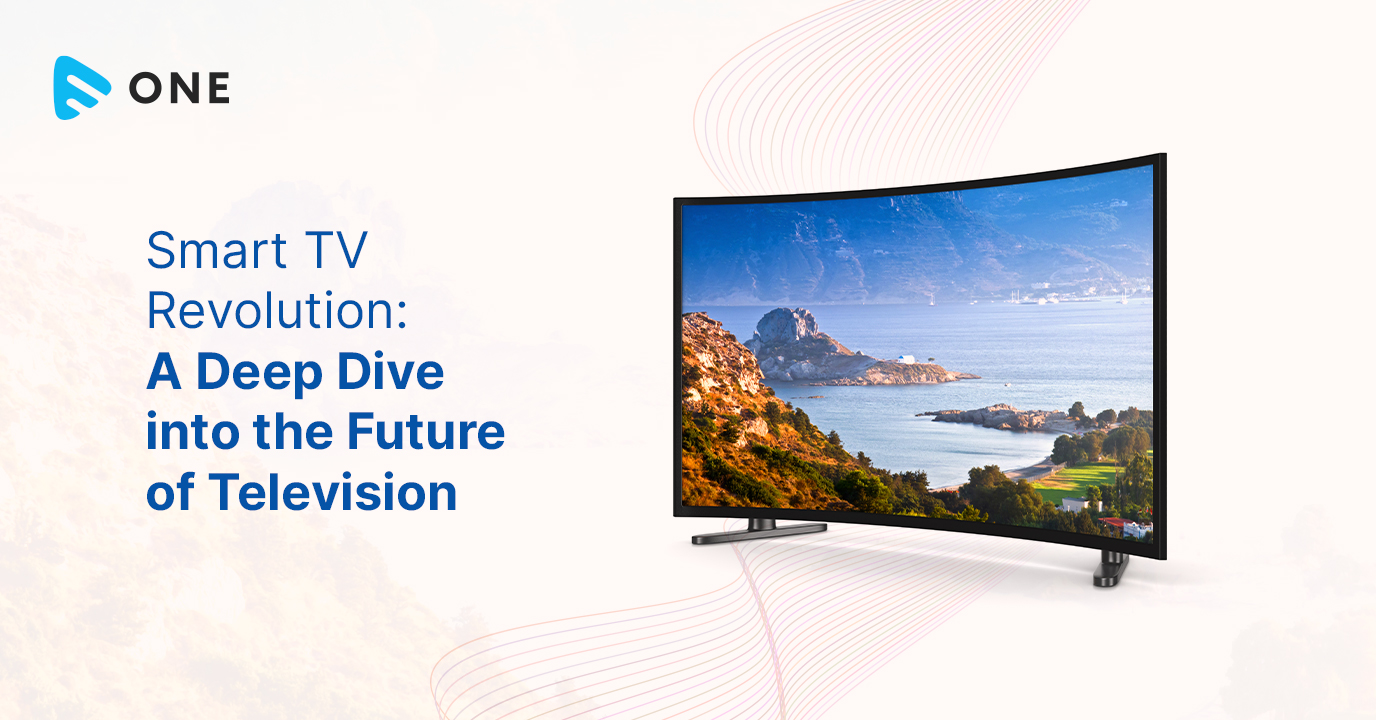

This blog dives deep into the groundbreaking innovations driving this revolution. We’ll explore everything from the magic of AI upscaling in TVs which breathes new life into older content, to hyper-intelligent streaming systems that know what you want to watch before you do. We’ll examine how AI tackles the challenges of higher resolutions like 8K, making them practical even with limited native content. Let’s explore how these advancements make modern smart TVs the ultimate upgrade for your home, offering an experience that is richer, more intuitive, and significantly more engaging than ever before.
Understanding AI’s Role in Modern Smart TVs
The best smart TVs available today no longer just passively display content—they actively learn, adapt, and anticipate your needs. *Unbeatable AI-powered home entertainment* fundamentally relies on sophisticated machine learning algorithms to automate complex tasks, continuously refine visual and audio output, and meticulously personalize your entire user experience (source: AI in Smart Home Devices). AI acts as the brain behind the screen, constantly working to improve quality and convenience. Here’s a closer look at how AI elevates modern TVs:
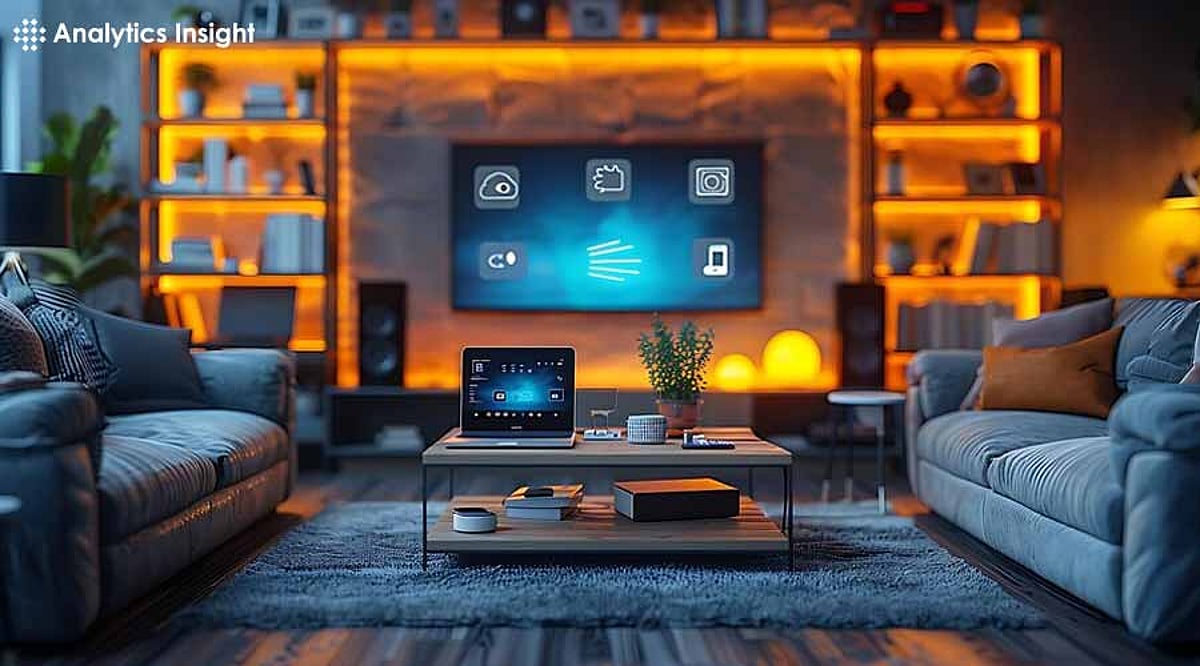

- Adaptive Brightness & Color: Integrated light sensors detect the ambient lighting conditions in your room. AI algorithms then automatically adjust screen brightness, contrast, and color temperature for optimal viewing comfort and accuracy, whether you’re watching in a sunlit room or a dark home theater. Some advanced systems even account for the color tone of your room’s lighting.
- Intelligent Voice Control: Far beyond simple channel changes, AI-powered voice assistants like Alexa or Google Assistant understand natural language commands. Saying “Play the latest episode of Stranger Things on Netflix” or “Show me action movies starring Keanu Reeves” triggers instant, accurate responses. AI handles the complexities of searching across multiple apps and services seamlessly.
- Real-Time Content Optimization: The AI processor analyzes content frame-by-frame, identifying object types (faces, text, landscapes), motion patterns, and genre. It then applies specific enhancements in real-time. For example, it might sharpen fast-moving objects during sports, enhance contrast and shadow detail in dark movie scenes, or smooth out motion judder for a more cinematic feel. This is often referred to as AI Picture Quality or similar branding by manufacturers.
- AI Sound Enhancement: AI doesn’t just focus on pixels; it optimizes audio too. By analyzing the audio signal and sometimes even using built-in microphones to understand room acoustics, AI can create virtual surround sound effects, clarify dialogue, and automatically adjust volume levels to prevent sudden loud bursts during commercials.
Why AI Matters
The integration of AI directly addresses several longstanding consumer frustrations associated with television viewing:
- Problem Solved – Blurry or Pixelated Content: You have a vast library of older DVDs, standard definition shows, or frequently encounter low-resolution streaming content. *AI upscaling in TVs* uses neural networks trained on vast image datasets to intelligently add detail, sharpen edges, and reduce noise, converting this older content into crisp, clear imagery that looks surprisingly good even on large 4K or 8K displays.
- Problem Solved – Endless Scrolling and Choice Paralysis: Faced with thousands of options across multiple streaming services, finding something new to watch can be exhausting. Machine learning algorithms analyze your viewing history (what you watch, what you skip, ratings you give, time of day you watch) to curate highly personalized recommendations, significantly reducing search time and surfacing content you’re genuinely likely to enjoy.
- Problem Solved – Inconsistent Picture Quality: Different sources (broadcast TV, streaming, Blu-ray, gaming consoles) and varying content types (movies, sports, animation) often require different picture settings for optimal viewing. AI ensures visuals stay stunning across the board by automatically identifying the content type and applying the best processing enhancements moment-to-moment, without requiring manual adjustments.
The consumer appetite for these intelligent features is undeniable. Recent market research indicates that a staggering 78% of prospective TV buyers now prioritize AI-driven features when making a purchase decision (source: Samsung’s AI-Powered TVs). This clearly signals a major market shift towards smarter, more intuitive, and adaptive home entertainment systems.
Key Innovation 1: AI Upscaling in TVs
*AI upscaling in TVs* represents a significant leap forward, particularly crucial for anyone watching non-4K or the increasingly common 8K screen resolutions. With much of the available content still in HD (1080p) or even standard definition (480p), effective upscaling is essential for a satisfying viewing experience on modern high-resolution displays. AI transforms this process from a basic function into an intelligent art form.


The Science Behind AI Upscaling
Traditional upscaling methods were relatively crude. They essentially stretched the existing pixels to fill the higher-resolution screen, often leading to noticeable softness, blurring, and jagged edges (aliasing). AI upscaling takes a fundamentally different, more sophisticated approach. Systems like Samsung’s Quantum Processor AI or LG’s α9 AI Processor utilize deep learning neural networks trained on massive databases containing pairs of low-resolution and high-resolution images. Here’s a breakdown of the process:


- Content Analysis: The AI processor first analyzes the incoming low-resolution video signal frame by frame. It identifies key elements like edges, patterns, textures, and specific objects within the image.
- Detail Restoration & Creation: Leveraging its training, the neural network predicts and intelligently *creates* missing pixel information rather than just stretching existing pixels. It enhances textures (like fabric, wood grain, or foliage), sharpens lines and edges without introducing harsh halos, and restores details lost in compression.
- Noise Reduction: AI algorithms are adept at distinguishing unwanted compression artifacts (like blockiness or mosquito noise common in streaming) from genuine image detail. It selectively reduces this noise without softening the overall picture.
- Object Recognition: Advanced AI upscalers can even recognize specific objects (like faces or text) and apply tailored enhancements to make them look clearer and more natural at the target resolution.
The sophisticated result? A standard definition DVD or a compressed 720p YouTube video can be transformed to look remarkably sharp and detailed on a massive 4K or even an 8K screen, far surpassing the capabilities of older upscaling technologies.
Why This Matters
- Optimizing Streaming Content: Major streaming platforms like Netflix, Hulu, and Prime Video host vast libraries with content spanning various resolutions. AI upscaling ensures a consistently high-quality viewing experience, regardless of whether you’re watching the latest 4K original series or an older show available only in HD.
- Preserving Legacy Media: It allows you to enjoy your collection of older movies on DVD or Blu-ray, classic television shows, or even home videos without cringing at distracting pixelation or blurriness on your large, modern TV.
- Future-Proofing Your Investment: As display resolutions continue to climb towards 8K and beyond, powerful AI upscaling becomes even more critical to bridge the gap until native content becomes widely available, ensuring your expensive new TV delivers value across all types of content.
Top Models with AI Upscaling
Leading manufacturers prominently feature their AI upscaling capabilities:
- LG OLED Evo G3 / C3 Series: These models utilize LG’s α9 AI Processor Gen6. Their “AI Picture Pro” feature includes sophisticated AI Upscaling that distinguishes between faces, bodies, and background objects to apply different enhancements, alongside dynamic tone mapping (source: AI Taking Over Smart TVs).
- Samsung Neo QLED (4K & 8K models): Samsung heavily promotes its Neural Quantum Processor, which uses multiple neural networks (up to 64 in their 8K models) to analyze and upscale content with remarkable clarity and detail restoration.
- Sony Bravia XR Models (e.g., A95L, X90L): Sony employs its unique *Cognitive Processor XR*, which attempts to mimic human vision and hearing. It cross-analyzes image elements like color, contrast, and detail simultaneously, focusing on focal points within the scene for more natural-looking upscaling and overall picture enhancement (source: AI Use In Smart TV).
Key Innovation 2: 8K Resolution Meets AI
8K smart TVs represent the current pinnacle of display resolution, boasting an incredible 33 million pixels (7680 x 4320)—four times the pixel density of 4K UHD (3840 x 2160). This translates to breathtakingly sharp, detailed, and immersive images, especially on larger screen sizes where the difference becomes more apparent. However, a significant challenge persists: the scarcity of native 8K content. This is precisely where artificial intelligence becomes not just beneficial, but *essential* to the 8K value proposition.


How AI Enhances 8K
Simply displaying HD or 4K content on an 8K screen without intelligent processing would magnify any imperfections—softness, compression artifacts, noise—making them *more* noticeable due to the sheer pixel density. AI bridges this critical gap, ensuring that lower-resolution sources look their best on these ultra-high-resolution panels. Flagship 8K TVs, such as Samsung’s Neo QLED 8K line featuring their powerful NQ8 AI Gen3 chip (or similar processors from Sony and LG), employ advanced AI algorithms specifically tuned for the demands of 8K:
- Intelligent 8K Upscaling: This goes beyond standard AI upscaling. The processor analyzes HD or 4K sources with even greater scrutiny, utilizing its extensive neural network training to reconstruct textures, sharpen edges, and generate fine details necessary to convincingly fill the 33 million pixels of an 8K display. The goal is to make upscaled content appear almost indistinguishable from native 8K.
- AI Detail Enhancement: Algorithms specifically target areas where detail can be realistically added or enhanced – think the texture of fabrics, distant foliage, or intricate patterns – adding a layer of perceived sharpness and depth appropriate for 8K.
- Advanced HDR Optimization: AI analyzes brightness and color information scene-by-scene (or even frame-by-frame) and optimizes HDR (High Dynamic Range) tone mapping specifically for the 8K panel’s capabilities, ensuring vibrant, lifelike colors, deep blacks, and bright highlights without clipping details.
- Noise and Artifact Reduction at Scale: AI effectively identifies and removes noise and compression artifacts from the source signal *before* upscaling, preventing these flaws from being amplified across the vast 8K pixel grid.
Without sophisticated AI, an 8K screen showing predominantly 4K or HD content would largely be displaying wasted potential, potentially even looking worse than on a native 4K set. AI ensures that the investment in 8K resolution delivers a superior visual experience across *all* types of content.
User Benefits of AI-Enhanced 8K
- Unmatched Gaming Experience: For gamers with powerful PCs or consoles like the PS5 and Xbox Series X, AI optimizes the experience. Features like AI Auto Game Mode reduce input lag, while AI upscaling can render game graphics closer to 8K resolution, providing incredible sharpness and immersion (though native 8K gaming is still rare). AI can also enhance motion clarity during fast-paced gameplay.
- Future-Proofing Your Setup: While native 8K content (from potential future streaming tiers, physical media, or broadcasts) is still emerging, owning an AI-powered 8K TV means you are prepared to take full advantage of it when it becomes more common. In the meantime, AI ensures your current content looks better than ever.
- Superior Picture Quality Today: Even with upscaled content, the combination of extreme pixel density and advanced AI processing on a premium 8K TV can result in an image with exceptional depth, clarity, and realism that surpasses typical 4K displays, especially on screens 75 inches and larger.
The technology powering these flagship 8K displays doesn’t come cheap, with prices often ranging from several thousand dollars up to $10,000 or more for the largest models (source: Future of Entertainment Tech). However, the crucial role of AI ensures that buyers aren’t just paying for dormant pixels but for an intelligent system capable of delivering a premium visual experience today and into the future.
Key Innovation 3: AI-Powered Streaming Recommendations
In the age of abundant streaming services, the paradox of choice is real. Faced with overwhelming libraries on Netflix, Disney+, Max, Prime Video, and countless others, the familiar question “What should I watch?” can lead to frustrating minutes, even hours, of endless scrolling. *AI-powered streaming recommendations* are the increasingly sophisticated solution to this modern dilemma, transforming content discovery from a chore into a personalized delight.


How Machine Learning Personalizes Picks
Smart TV platforms and streaming apps employ various machine learning techniques to understand your unique viewing habits and preferences. Systems like LG’s ThinQ AI, Samsung’s Tizen OS with Vision AI, and Google TV track a wide range of data points (while adhering to privacy policies and offering user controls):
- Viewing History Analysis: What shows and movies have you watched? Which ones did you finish? Which did you abandon halfway through? Which did you rate highly?
- Genre and Content Preferences: AI identifies patterns in the genres (comedy, drama, sci-fi, horror), actors, directors, and themes you frequently engage with.
- Time-Based Patterns: Do you tend to watch comedies during the week and documentaries on weekends? Lighter fare in the morning and dramas at night? AI learns these temporal habits.
- Implicit Feedback: How long do you hover over a title card before clicking? Which trailers do you watch? These micro-interactions provide subtle clues about your interests.
- Collaborative Filtering: The system analyzes viewing patterns of users with similar tastes (“Users who watched X also watched Y”) to suggest content you might have missed but others like you enjoyed.
- Content-Based Filtering: Recommends items similar to those you’ve liked in the past based on shared attributes (genre, actors, keywords).
- Contextual Factors: Some systems incorporate factors like time of day, day of the week, or even seasonal trends (e.g., suggesting holiday movies in December).
Over time, through continuous learning and refinement, the AI builds a detailed profile of your tastes. The result? Your TV’s home screen and streaming app interfaces become highly personalized hubs, prominently featuring titles *you* are statistically most likely to enjoy, moving beyond generic “Top 10” lists or broad trending categories.
Top Platforms Using AI Recommendations
- Samsung Vision AI (Tizen OS): Integrates recommendations across various installed apps like Prime Video, Netflix, and Hulu, attempting to understand your viewing habits holistically rather than just within a single service. It aims to provide a unified discovery experience.
- LG ThinQ AI (webOS): Offers personalized content suggestions based on viewing history and app usage. It also features voice search capabilities that understand context to deliver relevant recommendations across partnered services.
- Google TV / Android TV: Leverages Google’s powerful search and AI capabilities. Its universal search function pulls content from multiple subscribed services into one interface, providing recommendations based on your Google account activity and viewing habits across platforms like Netflix, Disney+, Max, etc.
- Amazon Fire TV (Fire OS): Heavily integrates with Prime Video and uses viewing data, purchase history (if applicable), and Alexa interactions to tailor suggestions across the Fire TV ecosystem.
The impact of effective AI recommendations is significant. Industry studies have suggested that personalized AI recommendations can reduce content browsing time by as much as 35% (source: Copilot AI for TVs). This means viewers spend more time engaged with content they love and less time lost in menus, directly contributing to a more satisfying and *unbeatable AI-powered home entertainment* experience.
Top Picks: Best AI-Driven Smart TVs of 2024
Searching for the absolute best in *unbeatable AI-powered home entertainment*? The market is competitive, but certain models stand out for their exceptional integration of artificial intelligence across picture quality, sound, and smart features. Here are three top contenders leading the pack in 2024:
1. Samsung Neo QLED 8K (e.g., QN900D Series) ($3,000–$10,000+)
Samsung’s flagship 8K line continues to push the boundaries of AI integration.


- AI Upscaling & Processing: Powered by the latest NQ8 AI Gen3 Processor, it uses up to 64 neural networks for unparalleled 8K AI Upscaling Pro and Real Depth Enhancer Pro, turning virtually any content into stunning near-8K quality (source: Samsung’s Upcoming Tech). AI Motion Enhancer Pro optimizes fast-moving scenes for clarity.
- AI Sound: Features like Adaptive Sound Pro and Object Tracking Sound Pro use AI to analyze your room’s acoustics and the content being played, optimizing audio delivery and creating an immersive soundscape where audio appears to follow the action on screen. Active Voice Amplifier Pro enhances dialogue clarity in noisy environments.
- Smart Features: The Tizen OS offers AI Energy Mode to optimize power consumption. Multi-view allows simultaneous display from multiple sources (e.g., watching a tutorial while gaming). AI-driven recommendations are integrated across the smart hub.
- Best For: Users demanding the absolute cutting edge in resolution, AI picture processing, and a bright picture suitable for various lighting conditions.
2. LG OLED Evo G3 / C3 Series ($2,000–$6,500)
LG’s OLED technology combined with their advanced AI processor delivers exceptional contrast and smart capabilities.
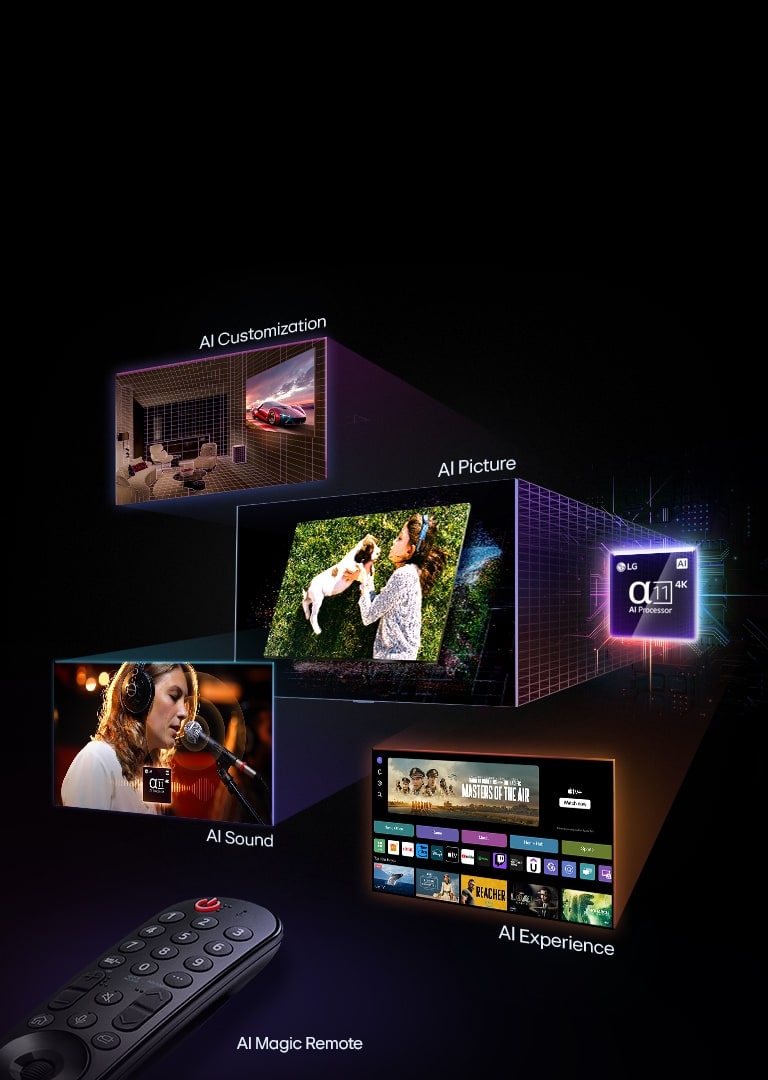

- AI Picture & Brightness: The α9 AI Processor Gen6 drives AI Picture Pro, offering sophisticated upscaling and object enhancement. On the G3 model, *Brightness Booster Max* leverages AI algorithms alongside hardware improvements for significantly brighter OLED images while maintaining perfect blacks. Dynamic Tone Mapping Pro adjusts contrast across thousands of zones.
- AI Sound Pro: Creates virtual 9.1.2 surround sound from stereo sources using AI analysis. Auto Volume Leveling and Clear Voice Pro enhance the audio experience based on content type.
- Smart Features & Gaming: LG’s webOS is intuitive, offering personalized profiles with AI recommendations. ThinQ AI supports voice commands via Alexa and Google Assistant. Excellent gaming features include NVIDIA G-Sync compatibility, AMD FreeSync Premium, VRR, and low input lag, often enhanced by an AI Game Optimizer mode.
- Best For: Cinema enthusiasts prioritizing perfect black levels and contrast, gamers, and users seeking a refined smart TV experience with strong AI audio-visual processing.
3. Sony Bravia XR A95L (QD-OLED) ($2,800–$5,000 approx.)
Sony’s unique approach with the Cognitive Processor XR focuses on mimicking human perception for a natural and immersive AI experience.
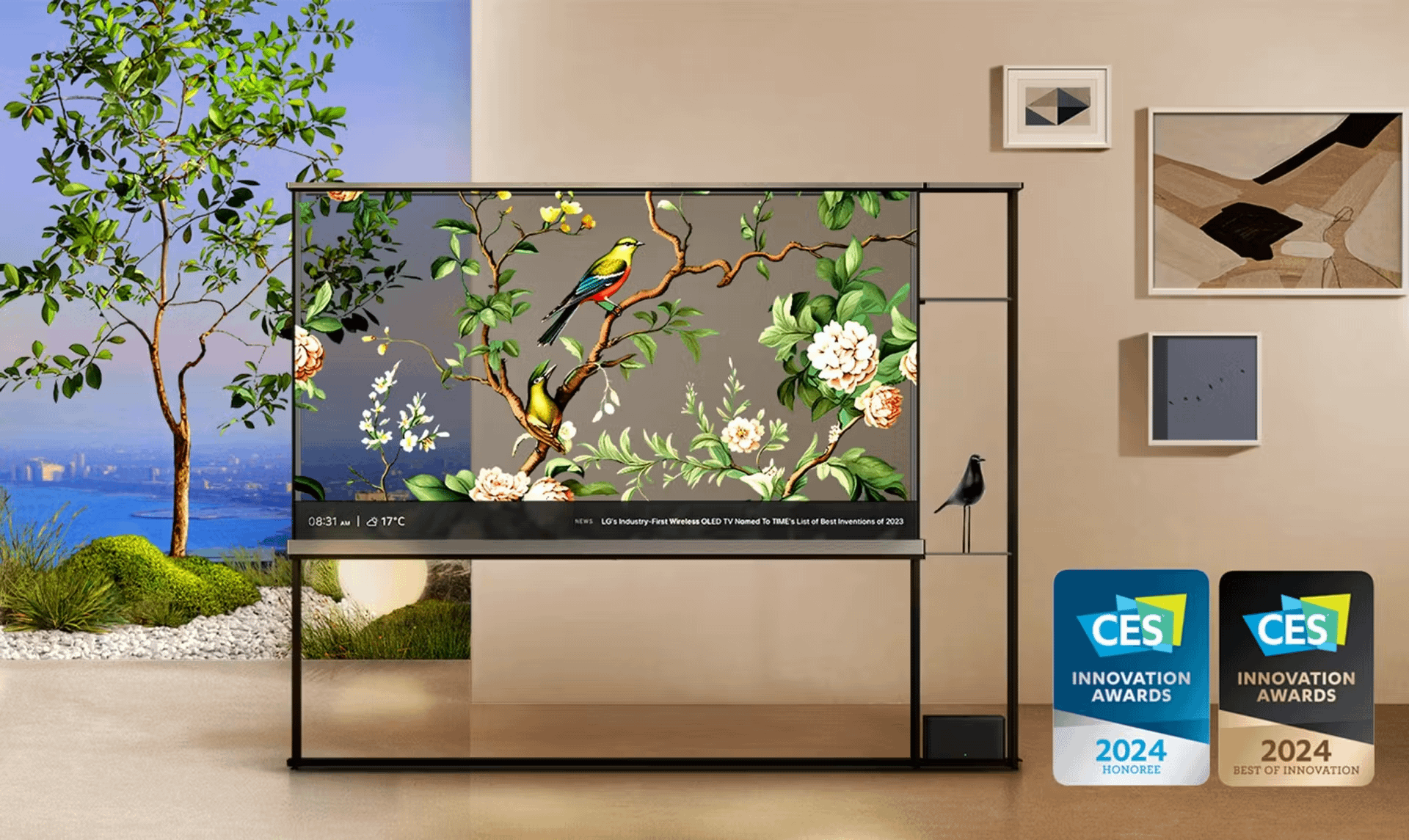

- Cognitive Processor XR: This processor analyzes content focusing on focal points, much like the human eye. It cross-analyzes picture and sound elements simultaneously, optimizing color, contrast (XR Contrast Booster), clarity (XR Clear Image), and motion (XR Motion Clarity) for exceptionally lifelike results. XR Upscaling intelligently recreates lost texture and detail.
- AI Sound: *Acoustic Surface Audio+* (on OLED models like A95L) uses actuators to vibrate the screen itself, turning the entire display into a speaker for perfectly positioned sound that matches the action. XR Surround creates a 3D audio experience. Voice Zoom 2 enhances dialogue clarity.
- Smart Features & Eco: Runs Google TV, offering excellent app support and personalized recommendations leveraging Google’s AI. The *Eco Dashboard* uses AI to analyze usage and suggest energy-saving settings, contributing to sustainability. Bravia Core provides high-bitrate streaming optimized for Sony TVs.
- Best For: Users valuing natural picture processing, innovative audio solutions, seamless Google integration, and a focus on creator intent.
Future Trends in AI-Powered Home Entertainment
The evolution of *unbeatable AI-powered home entertainment* is far from over; we are arguably just scratching the surface of what’s possible. As AI algorithms become more sophisticated and hardware more powerful, we can expect even more integrated, intuitive, and immersive experiences. Here’s a glimpse into what the near future might hold:


1. Advanced Voice-Activated AI Assistants & Smart Hub Control
While current voice control is useful, the next generation will likely see the TV become an even more central hub for the entire smart home. Imagine more complex, conversational commands: “Dim the living room lights to 50%, set the thermostat to 70 degrees, and play the latest episode of *Oppenheimer* in IMAX Enhanced mode.” AI will enable the TV’s assistant to understand multi-step requests, control a wider range of smart home devices from various brands seamlessly, and automatically adjust TV picture and sound settings based on the requested content or mood context.
2. Truly Adaptive Environments
Future AI systems will move beyond simple ambient light sensors. Expect TVs to use built-in cameras (with stringent privacy controls) and advanced sensors to comprehensively scan your viewing environment. This AI room analysis could:
- Dynamically Adjust Picture: Compensate not just for brightness but also for color temperature changes throughout the day (e.g., cool morning light vs. warm evening lamps) and minimize glare from specific window locations.
- Optimize Sound Precisely: Map the room’s dimensions and identify furniture placement to precisely calibrate audio output, potentially adjusting sound beams to optimize delivery for viewers sitting on the couch versus in an armchair off to the side. This goes far beyond current room calibration techniques.
Early demonstrations of such adaptive environment AI suggest significant improvements in picture consistency and audio immersion, potentially reducing manual calibration needs dramatically.
3. Holographic & Modular Displays
While still further out, research and development are pushing towards fundamentally new display form factors heavily reliant on AI. Startups and established companies are experimenting with:
- Light Field / Holographic Displays: TVs capable of projecting glasses-free 3D images that appear to float in space or have genuine depth. AI would be crucial for rendering these complex visuals, tracking viewer position for optimal effect, and potentially upscaling standard 2D/3D content into holographic formats (source: Copilot AI for TVs).
- Modular Displays: Imagine TVs composed of smaller panels that can be rearranged or expanded to create different screen sizes and aspect ratios. AI would manage the complex task of ensuring seamless image continuity, color matching, and processing across these dynamic configurations (e.g., Samsung’s “The Wall”).
These futuristic concepts depend heavily on AI for rendering, control, and content adaptation, promising radically new forms of visual entertainment.
4. Enhanced Accessibility through AI
AI holds immense potential to make entertainment more accessible for everyone. Future developments could include:
- AI-Generated Audio Descriptions: Real-time, AI-created descriptions of on-screen action for visually impaired users, going beyond pre-recorded tracks.
- Smarter Closed Captions: AI could improve the accuracy, timing, and even translation of captions, potentially identifying speakers automatically or summarizing dialogue.
- Personalized Interfaces: AI adapting the user interface (font size, contrast, menu layout) based on individual user needs and preferences detected automatically or set in a profile.
- Sign Language Interpretation: While challenging, research explores AI generating real-time sign language interpretation for dialogue.
By leveraging AI, future home entertainment systems can become significantly more inclusive and user-friendly for people with diverse needs.
Frequently Asked Questions (FAQ)
1. Is AI upscaling really that much better than traditional upscaling?
Yes, generally. Traditional upscaling often just stretches pixels, leading to blurriness and artifacts. AI upscaling uses machine learning trained on vast image datasets to analyze the content, intelligently add detail, sharpen edges, and reduce noise. The result is a significantly sharper, cleaner, and more detailed picture when viewing lower-resolution content (like HD or SD) on a 4K or 8K TV.
2. With little native 8K content, is buying an 8K TV worth it right now?
It depends on your budget and priorities. The primary benefit of 8K TVs today lies in their advanced AI processing, particularly AI upscaling, which makes HD and 4K content look exceptional on the higher-resolution panel. If you want the absolute best picture quality available (especially on large screens) and value future-proofing, an AI-powered 8K TV can be a worthy investment. However, premium 4K TVs with strong AI features offer excellent performance for significantly less money, which might be a more practical choice for many.
3. Are AI recommendations invading my privacy? How is my viewing data used?
This is a valid concern. Reputable TV manufacturers and streaming services state they collect viewing data (what you watch, search for, etc.) primarily to personalize your experience and improve their services. Data is often anonymized or aggregated. Most platforms offer privacy settings where you can manage data collection, view the data collected, or even opt-out of personalized recommendations, though this might impact the feature’s effectiveness. Always review the privacy policy of your smart TV and streaming apps.
4. How does AI specifically improve the sound quality on modern TVs?
AI analyzes the audio signal in real-time to identify elements like dialogue, music, and sound effects. It can then apply enhancements like clarifying voices (e.g., Active Voice Amplifier), creating virtual surround sound effects for greater immersion (AI Sound Pro), optimizing sound based on the genre (e.g., sports mode, movie mode), and even calibrating the audio output based on your room’s acoustics using built-in microphones (Adaptive Sound).
5. What’s the real difference between the AI processors from Samsung (Quantum Processor), LG (α AI Processor), and Sony (Cognitive Processor XR)?
While all aim to enhance picture and sound using AI, they have different approaches and marketing terms. Samsung often emphasizes the number of neural networks for powerful upscaling and detail enhancement. LG focuses on object recognition (distinguishing faces, bodies, backgrounds) for tailored processing and deep learning. Sony’s Cognitive Processor XR uniquely tries to mimic human perception, cross-analyzing multiple picture and sound elements simultaneously and focusing on focal points within a scene for a more natural image. All represent sophisticated AI driving their respective TV’s performance, but Sony’s approach is conceptually distinct.


